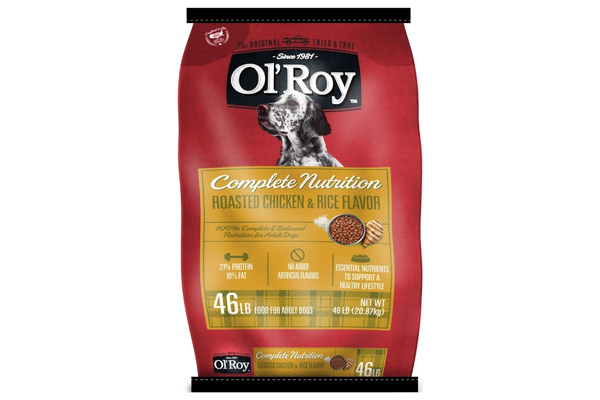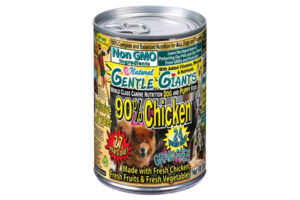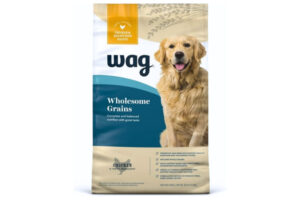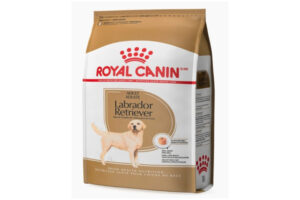Walmart’s Ol’ Roy Dog Food – Complete Brand Review
Looking for budget-friendly dog food that won’t break the bank? You’ve probably spotted those distinctive Ol’ Roy bags while wandering through Walmart’s pet aisles. As America’s best-selling dog food by volume, Ol’ Roy has become synonymous with affordable pet nutrition. But is the price advantage worth it? I’ve spent years analyzing dog food formulations and ingredient quality, and today I’m diving deep into Walmart’s private label offering to help you decide if it deserves a spot in your dog’s bowl.
Named after Walmart founder Sam Walton’s beloved bird dog, Ol’ Roy has maintained its position as a budget-friendly staple since 1981. With no advertising budget and exclusive distribution through Walmart’s massive retail network, this brand passes those savings directly to consumers – but what exactly are you getting for that remarkably low price tag? Let’s break down everything from ingredients to recall history to help you make an informed decision.
Brand History and Development
Ol’ Roy entered the market in 1981 as part of Walmart’s strategy to offer private-label alternatives across all departments. The brand was named after Sam Walton’s hunting companion and manufactured initially by Doane Pet Care. What’s fascinating is how Ol’ Roy climbed to the top spot in U.S. dog food sales without traditional advertising, instead leveraging Walmart’s unmatched distribution network and rock-bottom pricing strategy.
By the early 2000s, Ol’ Roy had captured an impressive 20% of the domestic dry dog food market. The manufacturing changed hands in 2006 when Mars Petcare (the company behind brands like Pedigree and Royal Canin) acquired Doane Pet Care, though the recipes and budget-friendly positioning remained consistent with Walmart’s vision.
Today, Ol’ Roy represents the ultimate value proposition in pet food: maximum calories per dollar spent. A 50-pound bag often retails for under $30, making it significantly cheaper than national brands occupying neighboring shelf space.
Product Range and Varieties
Ol’ Roy offers an extensive lineup designed to compete with national brands across various price points and dietary needs:
Dry Food Options
The core offering is the Complete Nutrition formula, featuring ground corn and meat and bone meal as primary ingredients. This basic recipe provides 21% protein and 10% fat at minimum, meeting AAFCO standards for adult maintenance. For around $28.88 for a 44-pound bag ($0.66/lb), it’s undeniably the most economical option in the pet food aisle.
Specialized varieties include High Protein formulas (27% protein), T-Bone & Bacon flavors, and life-stage specific options for puppies and senior dogs. Most formulations rely heavily on corn, wheat, and soybean ingredients, with meat ingredients typically appearing after the first few plant-based components.
Wet Food Selection
The canned food lineup features cuts in gravy, meaty loaves, and stews in 13.2-oz cans priced around $0.93 each. Popular varieties include Ribeye, New York Strip, and Bacon Cheeseburger flavors. While the flavor names sound appetizing, the main ingredients remain meat by-products and water, supplemented with wheat gluten and artificial flavors.
Treats and Chews
Ol’ Roy’s treat line includes Munchy Bones, rawhide alternatives, dental chews, and biscuits in various flavors. The treat formulations generally mirror the main food line’s approach – budget-friendly ingredients like soy flour, corn syrup, and artificial flavors that appeal to canine taste preferences without premium ingredients.
Ingredient Quality and Nutritional Analysis
When examining any dog food, I always start with the ingredient list – and this is where Ol’ Roy reveals its budget-conscious formulation strategy:
In the flagship Complete Nutrition dry formula, the first five ingredients typically include ground corn, meat and bone meal, soybean meal, animal fat, and corn gluten meal. This grain-heavy approach keeps production costs low but raises nutritional concerns:
- Corn as the first ingredient indicates it makes up the largest portion of the food by weight, providing inexpensive calories but limited nutritional value compared to animal proteins.
- Meat and bone meal is a rendered product from unspecified animal sources, lacking the transparency of named meat ingredients (like “chicken” or “beef”).
- The heavy reliance on plant proteins (soybean meal, corn gluten meal) to boost protein percentages rather than using whole animal proteins.
Nutritionally, the standard Ol’ Roy formulas provide approximately 24% protein and 12% fat, with carbohydrates making up roughly 51% of the food. This carbohydrate-heavy profile may not be ideal for all dogs, particularly those needing higher protein diets or those with grain sensitivities.
The food does contain added vitamins and minerals to meet AAFCO minimum standards, but lacks the prebiotics, probiotics, omega-3 fatty acids, and joint supplements found in premium brands. Most formulations also contain artificial colors and preservatives that health-conscious pet parents often prefer to avoid.
Safety Record and Recall History
When evaluating any pet food brand, safety history provides crucial insight into manufacturing standards and quality control. Ol’ Roy has experienced fewer recalls than some might expect given its massive production volume, but several incidents warrant mention:
In 2007, Ol’ Roy was included in a significant recall when manufacturer Doane Pet Care pulled 55-pound bags of Complete Nutrition dry dog food due to potential Salmonella contamination. The affected products came from a specific manufacturing facility in Virginia, though no illnesses were officially confirmed.
More concerning are the ongoing consumer complaints documented through platforms like ConsumerAffairs, where some pet owners report digestive issues, skin problems, and even more serious health concerns after feeding Ol’ Roy products. While anecdotal reports cannot establish causation, the volume and consistency of these complaints merit consideration.
Unlike premium brands with dedicated manufacturing facilities, Ol’ Roy relies on contract manufacturing, which can introduce variability in quality control procedures. Mars Petcare, the current manufacturer, produces numerous brands across various price points, but the specific quality assurance protocols for Ol’ Roy aren’t publicly detailed.
Consumer Feedback and Experiences
Customer reviews of Ol’ Roy reveal a stark divide in experiences and expectations:
On the positive side, many long-term users praise the exceptional value and report their dogs have thrived on the food for years. These customers often highlight the palatability of the food, noting their dogs eagerly consume it. For budget-conscious households, particularly those with multiple large dogs, Ol’ Roy makes pet ownership more financially manageable.
However, negative reviews frequently cite health concerns including digestive upset, excessive shedding, skin irritations, and in some cases, more serious issues requiring veterinary intervention. A common complaint involves unexpected recipe changes that seem to affect dogs previously tolerating the food well.
I’ve personally observed that dogs transitioning from premium foods to Ol’ Roy often experience an adjustment period with softer stools, which may reflect the different fiber content and digestibility of the ingredients. This doesn’t necessarily indicate harm but demonstrates the physiological impact of different formulations.
How Ol’ Roy Compares to Other Brands
To properly contextualize Ol’ Roy, we should compare it to both budget and premium alternatives:
At approximately $0.66 per pound for dry food, Ol’ Roy significantly undercuts even other economy brands like Purina Dog Chow ($1.84/lb) and Pedigree ($1.10/lb). The price difference becomes even more dramatic when comparing to mid-tier brands like Purina One ($2.20/lb) or premium offerings like Hill’s Science Diet ($2.50+/lb).
The ingredient quality reflects this price positioning. While premium brands lead with named meat ingredients (chicken, beef, salmon), feature limited fillers, and exclude artificial colors and preservatives, Ol’ Roy prioritizes cost-efficiency through corn-based formulations and generalized meat by-products.
Interestingly, Walmart has recognized the growing demand for better quality pet nutrition by introducing their Pure Balance line ($1.45/lb), which offers grain-free options and named meat ingredients at a mid-tier price point. Consumers seeking a quality upgrade while staying within Walmart’s ecosystem might want to check out our Strive dog food review for another option worth considering.
What Kind of Dogs is This Food Suitable For?
Ol’ Roy is best suited for adult dogs in good health without specific dietary sensitivities or health conditions. The standard formulations meet basic nutritional requirements for maintenance but may not provide optimal nutrition for dogs with special needs.
Specifically, Ol’ Roy works well for:
- Budget-conscious households with multiple dogs
- Dogs without grain allergies or sensitivities
- Adult dogs with no underlying health conditions
- Dogs with robust digestive systems that can handle ingredient changes
I would be more cautious recommending Ol’ Roy for puppies, pregnant or nursing females, senior dogs with declining kidney function, or dogs with allergies, skin issues, or digestive sensitivities. These groups have heightened nutritional needs or limitations that may benefit from more specialized formulations.
While Ol’ Roy does offer puppy-specific formulas, the quality of ingredients and nutritional profile makes me hesitant to recommend it for this crucial developmental stage when compared to higher-quality alternatives (even moderately priced ones).
For households with both budget constraints and dogs having specific health needs, rotating Ol’ Roy with a higher-quality food or supplementing with fresh ingredients might provide a balanced approach.
Is Ol’ Roy Dog Food Good? My Professional Assessment
After analyzing Ol’ Roy’s formulations, manufacturing practices, recall history, and consumer experiences, I can offer this assessment: Ol’ Roy is adequate but not optimal nutrition for dogs.
The food meets minimum AAFCO standards, providing basic nutrition that can sustain dogs, but falls short of what I’d consider ideal canine nutrition. The heavy reliance on corn and other grains as primary ingredients, use of generic meat by-products rather than specific named meats, and inclusion of artificial colors and preservatives all represent nutritional compromises made to achieve the rock-bottom price point.
I respect that Ol’ Roy makes pet ownership more accessible for families on tight budgets – this is genuinely valuable. A dog fed Ol’ Roy is certainly better off than a dog not fed at all or one fed inconsistently due to financial constraints. The brand succeeds remarkably well at its core mission: providing affordable calories that meet minimum nutritional standards.
However, I cannot honestly recommend it as a first-choice diet when better options exist within moderate price increases. Even stepping up to Purina Dog Chow or Walmart’s own Pure Balance line would provide significant nutritional improvements with more transparent ingredient sourcing.
If budget constraints make Ol’ Roy your only viable option, consider supplementing with fresh foods occasionally – even adding scrambled eggs, plain yogurt, or some cooked lean meat can help round out the nutritional profile.
Find Your Dog’s Perfect Food Match
Every dog is unique – from energy levels and size to breed-specific tendencies and individual health concerns. What works wonderfully for one dog might cause issues for another. That’s why choosing the right dog food isn’t about finding the most expensive option or the one with the prettiest packaging – it’s about matching the nutritional profile to your specific dog’s needs.
We’ve developed a specialized questionnaire that takes into account your dog’s age, weight, activity level, breed, existing health conditions, and other key factors to determine which food formulations would best support their wellbeing. In less than 60 seconds, you’ll receive personalized recommendations for the three best dog food matches specifically tailored to your furry friend.
Stop guessing in the pet food aisle! Get science-backed, individualized dog food recommendations completely free via this link. Your dog deserves nutrition as unique as they are.






